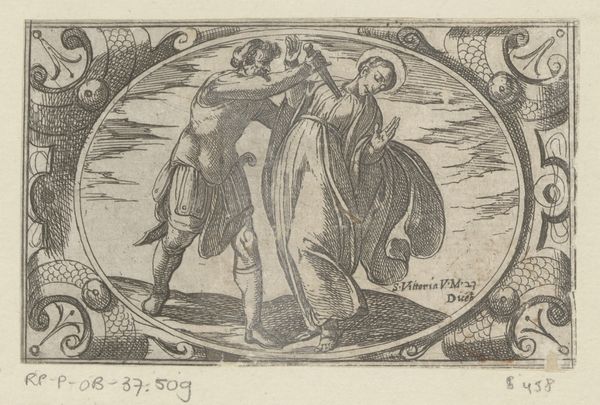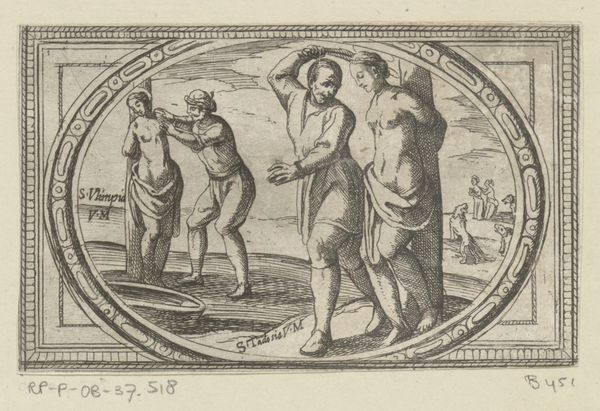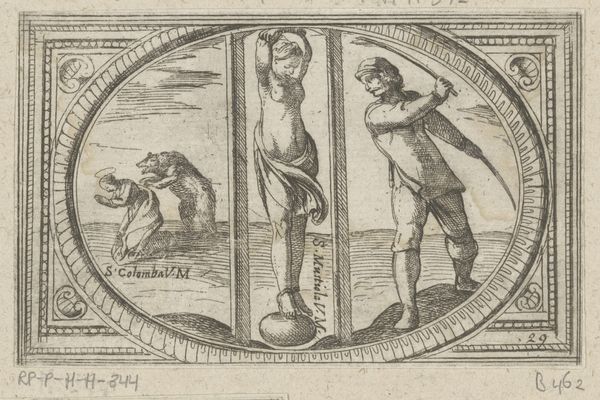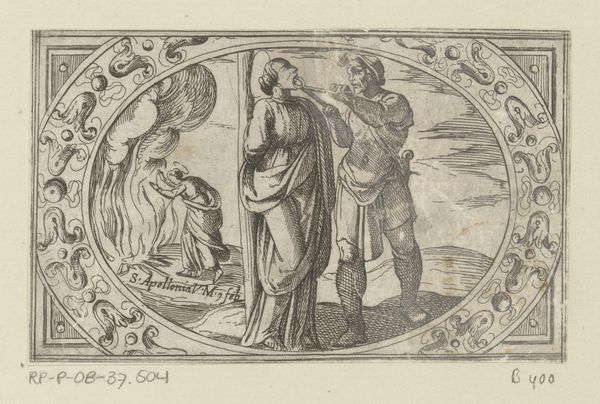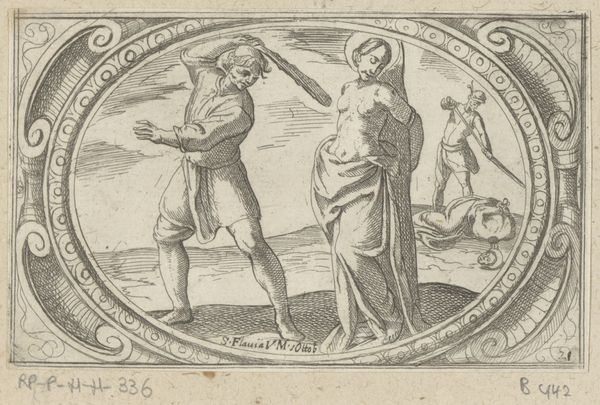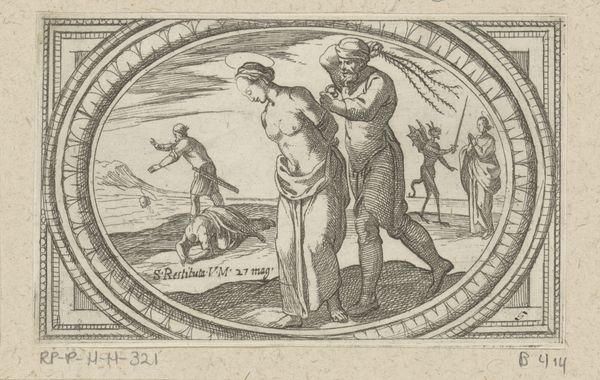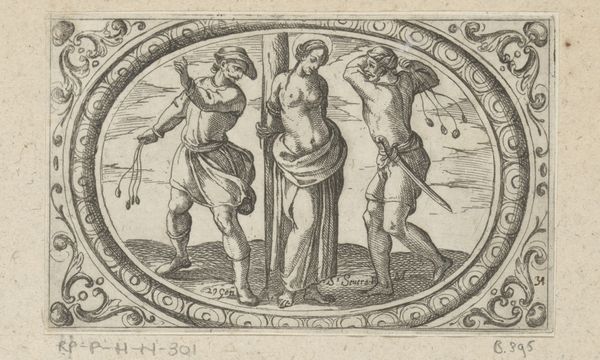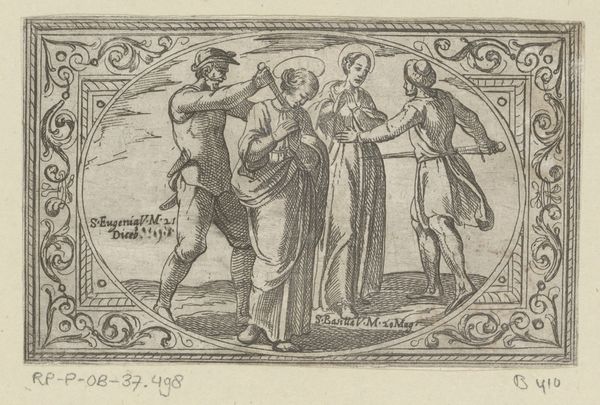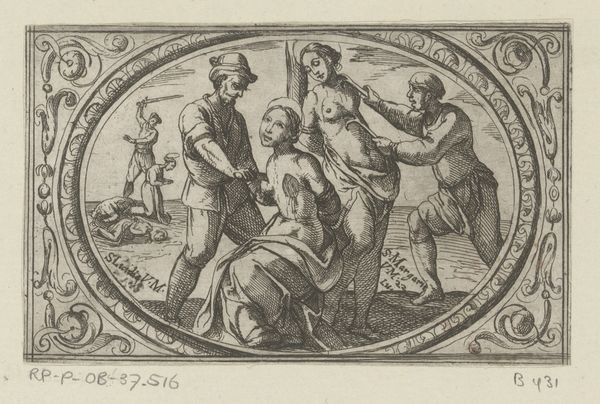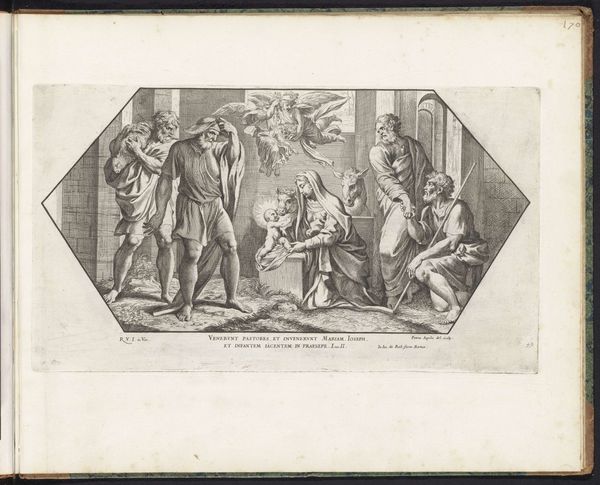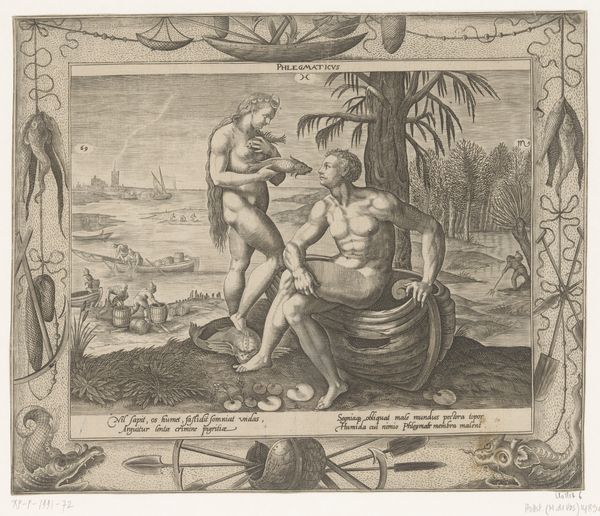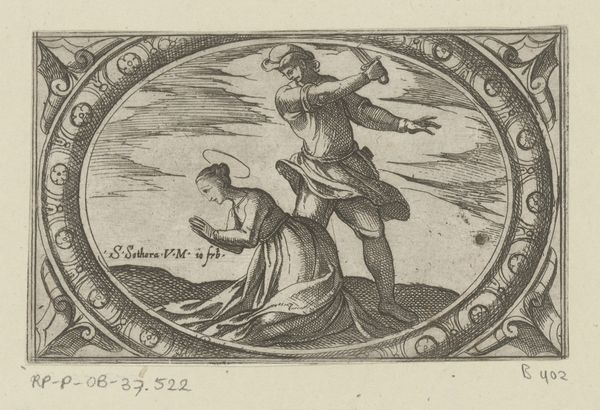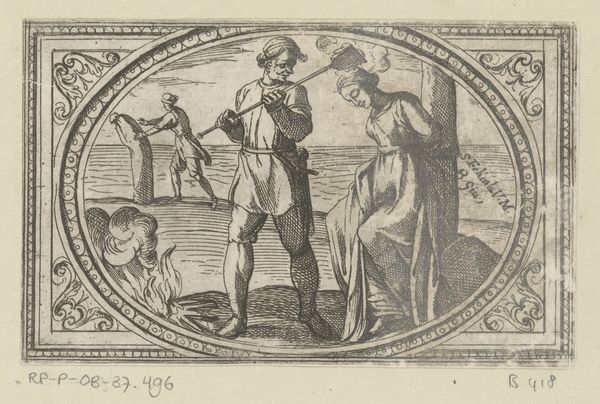
print, intaglio, engraving
#
narrative-art
#
pen drawing
# print
#
intaglio
#
figuration
#
history-painting
#
italian-renaissance
#
nude
#
engraving
Dimensions: height 73 mm, width 114 mm
Copyright: Rijks Museum: Open Domain
This print, made by Antonio Tempesta around the turn of the 17th century, depicts the martyrdom of H. Gliceria. It was made using the technique of etching, which involves drawing with a needle through a waxy ground on a metal plate, then exposing it to acid. The acid bites into the metal where the ground has been removed, creating an image that can be inked and printed. The quality of the etched line allows for Tempesta’s intricate detailing. Look closely, and you can see the varied textures, from the smoothness of skin to the rough bark of the tree. The act of etching itself—the labor and skill required—imbues the image with meaning. The contrast between the delicate lines and the violent scene is striking, a testament to the power of the printmaking medium to convey complex narratives. Prints like these were relatively inexpensive and could be widely disseminated, spreading stories of religious devotion throughout Europe and beyond. Far from being merely an illustration, the print is a powerful artifact that testifies to a complex intersection of labor, belief, and artistic skill.
Comments
No comments
Be the first to comment and join the conversation on the ultimate creative platform.
